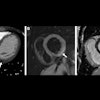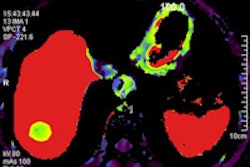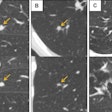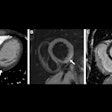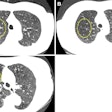Dear AuntMinnie Member,
The Society of Interventional Radiology (SIR) annual meeting is underway in San Diego, and we're pleased to be bringing you updates from it.
First up is a study from Northwestern University that assessed the effectiveness of radioembolization with yttrium-90 microspheres for treating breast cancer patients whose disease has spread to the liver. The group found that the procedure could be an alternative to chemotherapy. Click here for the details.
In other SIR 2014 news, researchers from New York found that distracting patients by having them watch movies and TV shows on special video glasses during interventional procedures makes them less anxious. And prostate artery embolization with microscopic beads that block blood flow could be a good treatment for an enlarged prostate.
CT lung screening
Chances are you're going to be hearing a lot about CT lung cancer screening in the next few weeks. That's because the U.S. Centers for Medicare and Medicaid Services (CMS) is set to convene an advisory committee meeting on April 30 to discuss the topic.
CMS last week released a list of questions that it plans to present to its Medicare Evidence Development and Coverage Advisory Committee. In particular, CMS is looking at evidence that will help identify which Medicare patients are most likely to benefit from low-dose CT screening.
In that same vein, check out this article from the European Congress of Radiology earlier this month that discusses data from the National Lung Screening Trial. Researchers sought to determine whether CT screening of patients with longer smoking histories would improve lung cancer predictability.
Be sure to keep track of upcoming developments in CT lung screening by signing up for our CT Insider newsletter.
Mammography's difficult choices
Finally, visit our Women's Imaging Digital Community for a final article from the National Consortium of Breast Centers meeting, which wrapped up last week in Las Vegas.
Dr. Brett Parkinson, director of the breast clinical program at Intermountain Healthcare in Salt Lake City, discussed the difficulties of running a breast screening program in the middle of swirling controversy over the effectiveness of screening.
Which technologies should you offer in addition to x-ray mammography? And how should you communicate to patients the disparate and often contradictory findings from different mammography screening studies? Find out by clicking here.
In other women's imaging news, learn about a texture analysis algorithm developed at the University of Pennsylvania that could help physicians better predict which patients might be more likely to have negative biopsy results.


